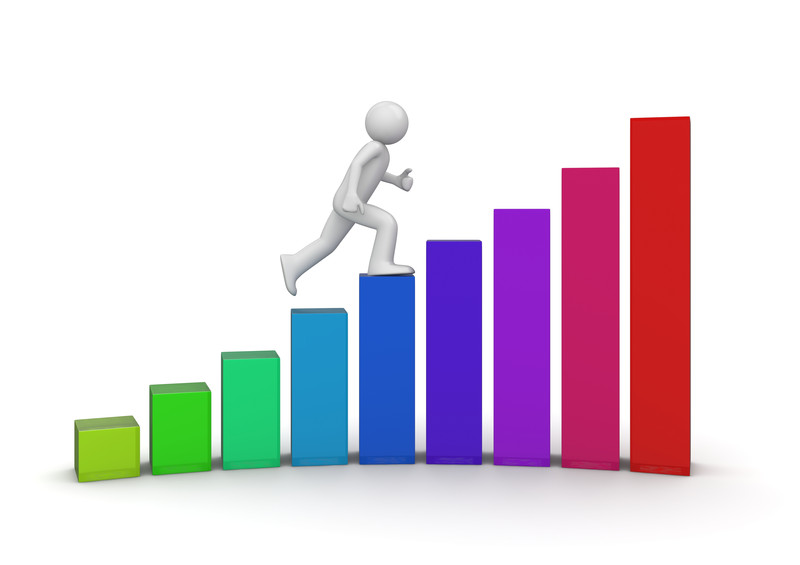 Last week I talked about the emotional guidance system that we are all born with, and I explained that your emotions are part of a highly sensitive feedback system designed to help you keep yourself aligned with your highest good, and with Who You Really Are. As such, all your emotions, even the ones we tend to think of as “negative” (anger, jealousy, boredom, etc.) provide you with valuable information about where your focus happens to be. Today we’re looking at how to actually use this information with something called the emotional scale.
Last week I talked about the emotional guidance system that we are all born with, and I explained that your emotions are part of a highly sensitive feedback system designed to help you keep yourself aligned with your highest good, and with Who You Really Are. As such, all your emotions, even the ones we tend to think of as “negative” (anger, jealousy, boredom, etc.) provide you with valuable information about where your focus happens to be. Today we’re looking at how to actually use this information with something called the emotional scale.
A little bit of background
Most people think that we experience an emotion as a reaction to an event; something happens and it triggers a corresponding emotion in a process that we really can’t control. But that’s not really the case. Our emotions are an indicator to us of where our alignment is at. The worse we feel, the less aligned we are. The better we feel, the more aligned we are. Our thoughts determine our focus. And our thoughts also determine our emotions. Learn to control your thoughts, and you automatically control your focus and your feelings.
This is critical, so I’ll say it again:
Our emotions are tied to our thoughts, and our thoughts can be controlled.
Again, emotions, in and of themselves, are neither “good” nor “bad”, although we sometimes tend to act on those emotions is ways that maybe aren’t so helpful. But the emotions themselves are just indicators, telling you where your thoughts are centred.
More about thoughts
We have anywhere between 50 000 and 70 000 thoughts going through our heads every single day. That works out to between 35 and 48 thoughts every minute. Most of them, obviously, are fleeting. And most of them we’re not really consciously aware of — there are just too many thoughts going through our heads for us to try and track every single one of. It would be too confusing, and that’s all we’d ever do in a day is track thoughts.
This is where the emotions come in. They let you know whether your current thoughts are helping you or hurting you. When you feel good, your thoughts are good. When you feel bad, your thoughts are not so good. In other words, when you are feeling any of what we call “negative” thoughts, it’s your wake-up call, letting you know that you need to pay closer attention to where your thoughts are going so that you can start shifting yourself back to a better feeling place.
Negative emotion is an indicator; a warning sign that what you are focused on or thinking about isn’t helpful to you. To start feeling better, you need to start working with the thoughts behind the emotions, rather than the emotions themselves (the thoughts are the cause, the emotions are the effect, or the symptoms – you want to go to the root in order to make lasting changes)
There is a “catch”
Though it sounds like it should be easy-peasy to just change those thoughts around and start feeling better, there is a catch: when you’re dealing with something that carries a lot of emotional baggage, changing your thought habits around the situation is, unfortunately, not that easy.
In many cases, especially with people who have an intellectual understanding of these processes, there’s a desire to get from a really negative point of view to a really positive point of view, and it’s just too big of a jump. You can’t do it — not in one go. It has to be a gradual process because your subconscious mind is so used to thinking in a certain way that a big change is seen as dangerous and it will fight tooth and nail against any attempt to shift away from those familiar patterns.
What is the emotional scale?
I’ve frequently mentioned on this site the idea of something being “too big a jump”, but what, exactly does that mean? When I say that, I’m specifically referring to the emotional guidance scale, most commonly associated with the Abraham-Hicks material. Why do I use that scale? Because it works. And because it actually has a basis in real psychology, which often works with the idea of emotional stages.
Just for you! Here’s a free emotional scale poster you can download:
Right-click on the following link and choose “save as” or “save target as”: The Emotional Scale (PDF 382KB)
Now, according to the Abraham-Hicks emotional scale, all our emotions can be charted out from complete joy to complete despair. The lower down the scale you are, the worse you feel, and the higher up the scale you are, the better you feel.
Here is what the scale looks like:
- Joy/ Empowerment/ Freedom/Love/Appreciation
- Passion
- Enthusiasm/ Eagerness/ Happiness
- Positive Expectation/ Belief
- Optimism
- Hopefulness
- Contentment
- Boredom
- Pessimism
- Frustration/ Irritation/ Impatience
- “Overwhelment”
- Disappointment
- Doubt
- Worry
- Blame
- Discouragement
- Anger
- Revenge
- Hatred/ Rage
- Jealousy
- Insecurity/ Guilt/ Unworthiness
- Fear/ Grief/ Depression/ Despair/ Powerlessness
Obviously, we do want to spend most of our time in the top half of the scale. And to do that, we need to understand how to work with the information that our emotional guidance system provides us.
How the emotional scale works
The key thing to understand about the emotional scale is that you can’t jump very far on the scale; changes can only be made incrementally. Movement up the scale is a scaffolding process, with each step up building on the last. This does not necessarily mean that progress must be slow, but you cannot ever skip steps along the scale.
It is absolutely possible to work your way up from the very bottom of the scale to the very top of the scale but the process has to happen in stages. You can’t go from utter misery to complete joy because you can’t even conceive of the concept of complete joy when you’re that far down the scale. When you’re in the depths of a clinical depression, for instance, there is no way you can instantly jump from “blackest hell” to “radiant joy”. You can’t even understand that happiness and joy are even possibilities when you’re in that kind of mind-space. But you can understand guilt and insecurity. And those give you just the tiniest bit of relief from the feelings of utter depression and powerlessness.
And that’s what the whole thing is about: finding thoughts that feel a little bit better than what you’re feeling right now. When you’re far down the scale, it’s about finding relief from your current emotions. As you get higher up the scale, it’s about reaching for the even better feeling thoughts. But each stage builds upon the one the below it.
Summing it up
Once you understand that your emotions are a feedback system, constantly letting you know the degree of your connectedness to Source and the degree of your focus on what’s in your own very best interests, you can start to use those emotions to help you increase your alignment with all of this. Your feelings are guideposts to your mental state, so it is not those emotional signals that need to be controlled – it is the thoughts behind them that need to be dealt with. Your power is in your thoughts, and by shifting those thoughts to better-feeling ones, you can work your way up the emotional scale, to ever greater alignment and focus with your highest good.
photo credit: (c) Can Stock Photo

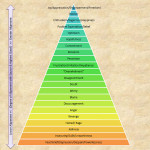







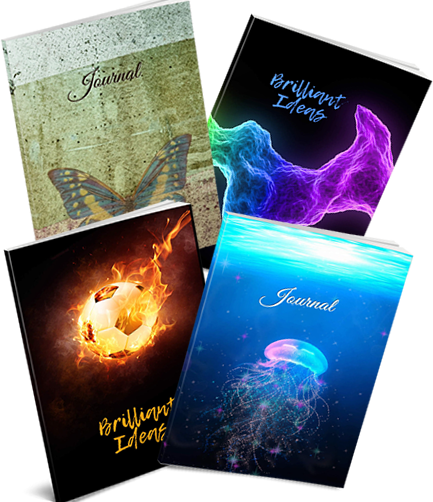
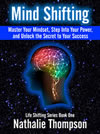
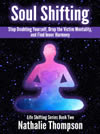
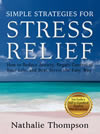
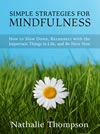




This is the best explanation I have read thus far on this important topic that I actually understood! Thanks, Nathalie!
Society would label these as “excuses”, however. I know we do not give a rip about society when creating deliberately, nor do we owe any explanation whatsoever or apologize for anything, especially our being, but since I am still deprogramming myself from its clutches, I cannot help but think I will be told that my emotions are cop outs of some sort, as I am used to hearing all the time. That is why I love how LOA explains it all and I wish I could understand it better.
I know we screw up and our actions have consequences, but spiritualists say these do not matter. We can acknowledge them and move on, yet we at times become stuck there and just can’t move on. Our thoughts can improve about the topic, but how about if we still feel bad about what we did? We can logically talk ourselves out of it and explain it to ourselves better and our inner being forgives us, but why do we not forgive ourselves? I know lots of people grapple with this issue. It is a tough one
This was great, thanks again!
Thanks A. — glad you found this one so useful. 🙂
Emotions are definitely not a cop-out. And they are not something that you need to deny or squash… that never works, anyway. This is why telling depressed people to “snap out of it” doesn’t work, and just causes more harm. You cannot snap out of depression any more than you can snap out of having a broken bone. Your emotions — all of them — are there to help you, not to hurt you. It’s just a matter of how you look at them and how you use them. Easier said than done, sometimes — especially when you’re far down the scale. But I find that understanding how these things work helps me to get a better handle on how to work with them.
Yes, actions have consequences. So do chronic thought habits. If you still feel bad about a topic or situation, it means that you haven’t actually processed it and moved on yet. I know I’ve written a couple of posts about forgiveness in general, but I think I’ll add a post about self-forgiveness to my topics list. That is an important one to cover, so thanks for bringing that up. In the meantime, just know that in this type of situation — when you’re stuck in an old hurt — there’s a lot of stagnant energy around that. It’s a block in your energy flow, so to speak. Being able to forgive yourself is important in being able to clear up that blockage and get all that energy flowing freely again.